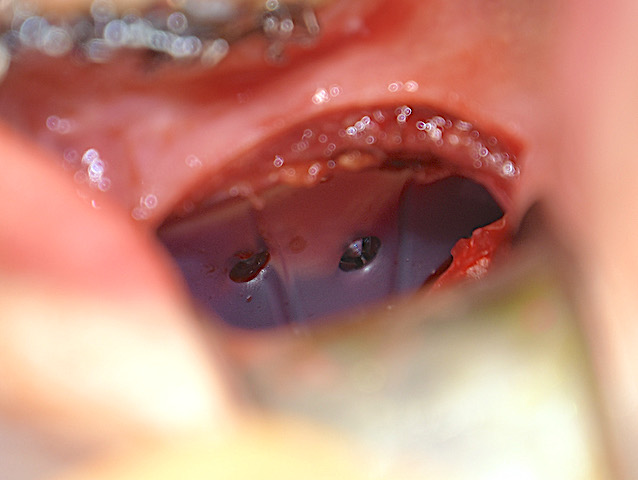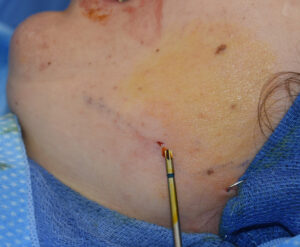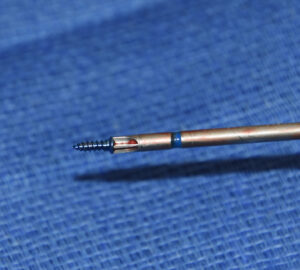Jaw angle implants are the only other lower jaw augmentation site than that of the chin. Despite being a paired structure, jaw angle augmentation is done far more infrequently for a variety of reasons. While jaw angle implants have been around since the 1990s they have only more recently been clinically used with any regularity. Such more recent use has been because of patient requests for better jawlines from both men and women.
Because of the lack of familiarity with jaw angle implants, numerous surgical techniques with their placement are not widely appreciated. One of these intraoperative techniques is to secure the implant to prevent postoperative migration/displacement. Unlike chin implants where fixation to the bone is often considered optional, such is not the case with jaw angle implants. Their posterior position on the ramus, the powerful displacing force of the masseter muscle and their position partially off of the bone (vertical lengthening style) makes screw fixation essential.
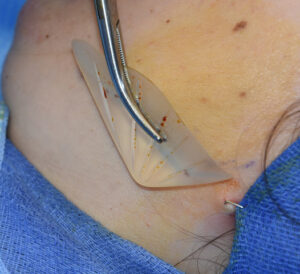
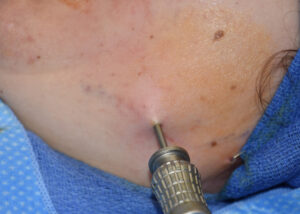

While it is tempting try and screw in jaw angle implants from an intraoral approach the angle is not good when using self-tapping screws. The screw will keep sliding down the bone to try and find engagement which also drives down the implant’s position on the bone. It is faster and more effective to place self-tapping screws perpendicular to the bone which can only be done with a percutaneous approach.
Dr. Barry Eppley
Indianapolis, Indiana

